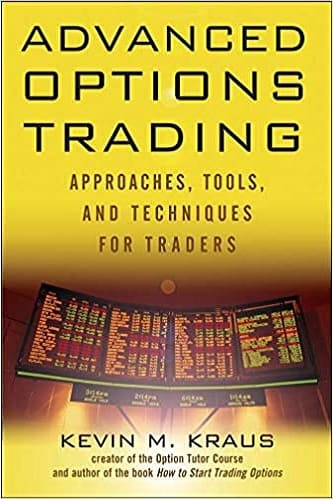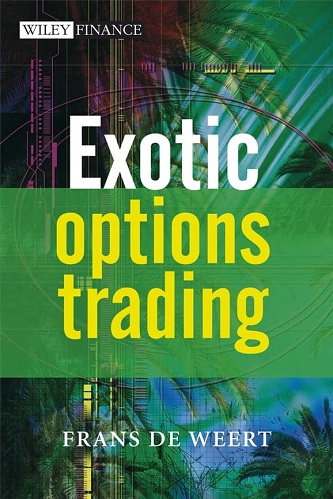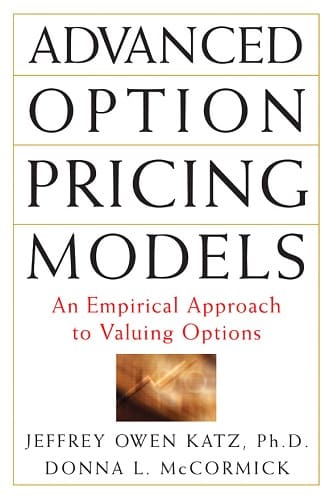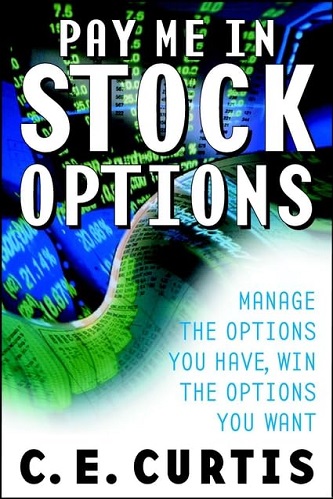Articles
The Out-Of-The-Money Butterfly Spread By Jay Kaeppel

This option trading strategy gives you a favorable reward-to-risk ratio and a wide profit range. The primary reason investors and traders are drawn to option trading is the ability to enter into unique positions to take advantage of unusual opportunities that they would otherwise not be able to, simply by trading the underlying security. If you buy 100 shares of a given stock, you make $100 for each point it rises in price and you lose $100 for each point it declines in price. There are no exceptions to this rule.
On the other hand, using options makes it possible to craft a position that will profit based on a specific expected scenario. You can create a position that will make money if the stock goes up, another if the stock goes down, yet another if the stock goes up or down a lot, and another still that will profit if the stock simply stays within a narrow range. And there are more possibilities. Thus, it is not surprising that interest in option trading continues to grow. The key to achieving long-term success in options is to know what opportunities exist and acquire the knowledge necessary to be able to exploit them.
Here, I will detail an option trading strategy that most traders have never considered — the out-of-the-money (OTM) butterfly spread. This strategy can offer the trader a limited-risk method to enter into a trade with an extremely favorable reward-to-risk ratio while offering a wide range of profitability. Still, before attempting to grasp the concept of the OTM butterfly spread, you should have an understanding of a standard at-the-money butterfly spread. So that’s where we’ll start.
CONSTRUCTING THE BUTTERFLY SPREAD
A butterfly spread is a position that can be entered into using either three separate call or put options, each at a different strike price. The strike is simply the price at which the underlying security would be bought or sold if the option was exercised. To enter the trade, a trader buys a lower-strike call or put, sells two higher-strike calls or puts, and sells one more even higher-strike call or put. In option lingo, the trader sells the middle strike price and “buys the wings.” The standard butterfly spread is a “neutral” trade that sells the at-the-money call (or put) and buys a higher and lower strike price call (or put). Entering into this position establishes a range of profitability with two breakeven prices — one above and one below the current price of the underlying security. The best way to understand the effect of entering into a butterfly spread is with an example, as you’ll see in Figure 1.

FIGURE 1: RISK CURVES FOR A STANDARD NEUTRAL BUTTERFLY SPREAD. For this trade you are selling the at-the-money call (or put) and buying a higher and lower strike price call (or put). Entering into this position established a range of profitability with two breakeven prices, one above and one below the current price of the underlying securities.
MOVING TO THE OUT-OF-THE-MONEY BUTTERFLY SPREAD
There are two things to note up front about an out-of-the-money butterfly spread (heretofore referred to as an OTM butterfly). The good news is that an OTM butterfly can often be entered for a very low dollar cost and can enjoy an extremely favorable reward-to-risk ratio. The bad news is that it is a directional trade — that is, when you use this strategy, you are speculating that the underlying security will move in a particular direction prior to option expiration. If the stock does not move in that direction, you will lose money on the trade.
In the case of a standard OTM butterfly, there is also the possibility that the underlying security could move too far in the anticipated direction and overshoot the far side of the profit range established when the trade was entered. As a result, a trade entered using this strategy must be monitored on a regular basis. We will look at an example of a 1x2x1 Otm butterfly as well as a 2x3x1 Otm butterfly. First, let’s consider when might be a good time to use this strategy.
FILTERING THE MARKET TREND
In Figure 2, you can see that the moving average convergence/divergence (MACD) for SPY (the exchange traded SPYDER fund that tracks the Standard & Poor’s 500) completed a major pullback and then flipped back to the upside. This can often be a good time to consider bullish OTM butterflies using call options.

2010 Feb Mar Apr
FIGURE 2: SPY WITH MACD GIVING A BULLISH SIGNAL. The MACD completed a major pullback and then flipped back to the upside. This can often be a good time to consider bullish OTM butterflies using call options.
From here I scanned for the 100 stocks with the best uptrending regression channels. Then I scanned those 100 stocks for OTM call butterfly spreads using call options. Trades were sorted by a variable known as “percent to double,” which simply calculates how far the underlying security would have to move in order for the option position to double in value. In this test, the top-ranked trade involved call options on Sears Holding (SHLD). The trade suggested was as follows:
- Buy 1 March 95 call @ 3.55
- Sell 2 March 110 calls @ 0.40
- Buy 1 March 125 call @ 0.09

FIGURE 3: RISK CURVES FOR SHLD OTM BUTTERFLY SPREAD. The trade has two breakeven prices: $97.84 and 122.16. If this trade is held until expiration, it will show a profit if the price of SHLD is between these two values. If the stock price is outside this range, the trade will lose money.
The cost to enter this trade in a ratio of 1x2x1 is $284 ($355 -(2 x $40) + $9). This represents the maximum risk on the trade. Figure 3 displays the risk curves for this trade. Several things should be noted regarding this particular example trade:
- There are only 31 days left until expiration. So if SHLD does not pop up to higher ground soon, this trade will lose money. A trader might choose to consider options with more time left until expiration in order to give the stock more time to move. The tradeoff is that the reward-to-risk ratio would likely be lower using longer-term options.
- The trade has two breakeven prices. The lower breakeven price is $97.84 and the upper breakeven price is $122.16. If this trade is held until expiration, it will show a profit if the price of SHLD shares is between these two values. If the stock price is outside of this range, the trade will lose money.
- The maximum risk is the amount paid to enter the trade. This is the amount paid to buy the lower and higher strike options (one 95 call for $355 and one 125 call for $9) minus the amount taken in by selling the middle strike (two 110 calls for $40 each, or $80 total).
- The maximum profit on the trade is $1,215. However, this would only occur if SHLD happened to close at exactly $110 a share on the day of the March option expiration. In a nutshell, traders should focus not so much on the maximum profit potential as they should on the width of the profit range.
- If the stock rallies soon, profits will accrue. However, if the price of the stock moves above the strike price of the option sold ($110), the risk curves will start to roll over. From a position management perspective, a trader holding this position might consider exiting the trade if the stock happens to rise that far prior to expiration.
In assessing how to manage this trade, there are clearly many possibilities:
- Hold out for the maximum gain possible
- Set a reasonable profit target (say, 50% to 100%) and exit the trade if that target is reached
- If a trader trades more than a one-lot (that is, if he trades 2x4x2, or some other multiple of 1x2x1), a trader might consider taking a quick profit on half the original position, if it becomes available, and letting the rest ride a bit longer to see if greater gains are possible.
Suggested Books and Courses About Trading Options
FOLLOWING THE TRADE
As you can see in Figure 4, by March 5, 2010, two weeks prior to option expiration, SHLD rallied up to $100.95 a share. At this point, the example trade could have been exited with a 100% profit. As you can also see, there remains a good deal of further upside potential, so each trader would need to decide what to do in this situation. A trader who entered into this trade in a quantity of 10x20x10 enjoys more flexibility, as he or she might consider closing out a large portion of the position to lock in a profit and then let the rest of the position ride.

FIGURE 4: SHLD RALLIES 9%, OTM BUTTERFLY DOUBLES IN VALUE. The rally up to $100.95 could have been exited with a 100% profit. But there could be further upside potential. What do you do in this situation?
As also mentioned, if SHLD were to rise to $110 or beyond, the trader would have another decision to make, as the risk curves would roll over at that point. Most traders would be best served by making these decisions at the time they enter the trade and then simply following their trading plan.
CHANGING THE RATIO OF THE OTM BUTTERFLY
There is another twist to consider when contemplating an OTM but-terfly spread. This involves chang-ing the ratio of the options traded to transform the butterfly from a stan-dard 1x2x1 ratio to something different. In reality, a trader can choose any ratio he or she wishes. However, a standard alternative is to consider a 2x3x1 ra-tio. Let’s adjust the previous example and compare the two trades.
For this example, we will assume the following trade is entered. The options are the same as those that appear in the first example. The only difference is the number of options bought or sold. This example involves the following positions:
- Buy 2 March 95 calls @ 3.55
- Sell 3 March 110 calls @ 0.40
- Buy 1 March 125 call @ 0.09

FIGURE 5: RISK CURVES FOR 2X3X1 SHLD OTM BUTTERFLY. This trade has only one breakeven price — $98. At any price above that, this trade will show a profit at expiration. The maximum profit on this trade is $2,400.
This trade costs $599 to enter (($355 x 2) – ($40 x 3) + $9). In Figure 5 you see the risk curves for this trade. You can see there are certain key similarities and differences between this trade and our first example:
- The trade has only one breakeven price — $98 a share. At any price above that, this trade will show a profit at expiration.
- The maximum risk is the amount paid to enter the trade. This is the amount paid to buy the lower and higher strike options (two 95 calls for $355 and one 125 call for $9) minus the amount taken in by selling the middle strike (three 110 calls for $40 each, or $120 total).
- The maximum profit on the trade is $2,400.
- Like the original 1x2x1 ex-ample, the risk curves for this trade will roll over if the price of SHLD exceeds $110 a share. However, unlike the 1x2x1 butterfly, the risk curves cannot drop back into negative terri-tory, regardless of how high the stock might rise in price.
Comparing the relative merits of these two trades is in the eye of the beholder, but it is still possible to highlight the primary points of difference between these two examples:
- A buyer of the 1x2x1 OTM butterfly has a slightly higher profit-to-risk ratio (4.3-to-1 versus 4-to-1).
- A buyer of the 2x3x1 OTM butterfly never has to worry about the trade rolling over and going back into negative territory if the stock advances.
Any potential OTM butterfly trade will have its own unique reward-to-risk characteristics. As such, a trader should take into consideration the following factors:
- The cost to enter the trade
- The reward-to-risk ratio
- The width of the range of profitability
- The likelihood the stock will reach the profitable range prior to expiration.
It is also worthwhile to consider different ratios such as the ones shown in the two examples here.
IT’S UNIQUE
As I stated at the beginning, option trading offers traders the potential to craft positions with unique reward-to-risk profiles. Entering into an out-of-the-money butterfly spread is not necessarily better or worse than simply buying shares of the underlying stock, or buying a call option or formulating some other position using options. In order to achieve long-term success, traders must take the time to compare different oppor-tunities to determine which offers the greatest potential. Still, for an option trader looking for a low-cost way to speculate on price direction, the OTM butterfly clearly offers a unique opportunity that few traders ever consider.
Jay Kaeppel, an independent trader, is the author of Seasonal Stock Market Trends and writes a weekly column titled “Kaeppel’s Corner” for Optionetics.com. He may be reached at the discussion boards at Optionetics.com.




